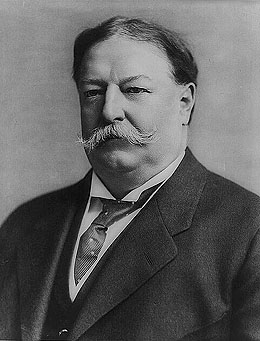On November 3, 1908, Washington voters choose Republicans William Howard Taft (1857-1930) for president and Samuel G. Cosgrove (1841-1909) as governor.
Theodore Roosevelt (1858-1919) honored a pledge not to run for a third term as president (he succeeded to the office in 1901 and was elected in his own right in 1904). He allowed the Republican Party to nominate Taft. Taft's opponent was Populist Democrat William Jennings Bryan (1860-1925).
Taft carried Washington state with approximately 105,000 votes against Bryan's 58,000.
Washington's One-Day Governor
Samuel Cosgrove beat Democrat John Pattison, but Cosgrove served just one day in office after he was inaugurated. He went to California for health reasons and died at Paso Robles on March 28, 1909, earning him the title "Washington's One-Day Governor" (Stewart).
Cosgrove was succeeded by Lieutenant Governor Marion E. Hay (1865-1933). Under Hay's administration the state's pioneering Workman's Compensation Act was passed along with woman suffrage.

